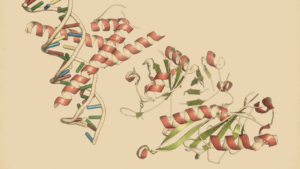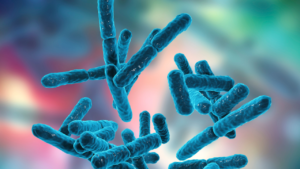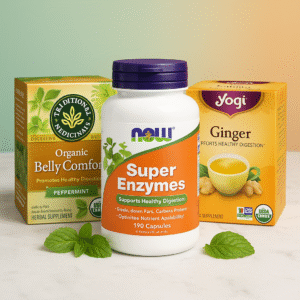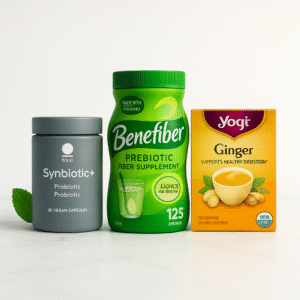Unveiling Calories in an Avocado and Nutrition Science
Wondering about the calories in an avocado? This article reveals everything you need to know about the nutritional value of avocados and how they can benefit your health.

Wondering about the calories in an avocado? This article reveals everything you need to know about the nutritional value of avocados and how they can benefit your health.
A medium-sized avocado contains about 322 calories and is mostly composed of fat (76%), with some carbohydrates (20%) and protein (5%) 18. The calorie content varies depending on the origin, type, size, and ripeness of the avocado, with an average of about 300 calories in California 19.

Introduction
Avocado is considered a superfood by some nutrition experts 1.
Avocado, also known as "alligator pear," is a fruit that originated from Mexico but is now widely cultivated in many countries 1.
Mexico produces the most avocados in the world, making up 25% of the total production. Chile comes in second with 8.5% 2.
Productivity has gone up because of improvements in postharvest technologies, decreased trade restrictions, better health claims, and larger areas of land being used for cultivation in producing countries 3.
World avocado production grew by 20% between 2007 and 2011, reaching 4.4 million tons in 2011.
Avocado comes in different sizes ranging from small (120g) to large (2.5kg) and can have a smooth or rough surface with either thin or thick skin. It can also be shaped like a pear, an egg or a round fruit. Depending on the type, some avocados may have only one seed 5.
This fruit is highly regarded for its creamy texture and versatility in the kitchen, making it a staple ingredient in many dishes, from salads to sandwiches and even smoothies.
Avocado is a special fruit with a delicious taste and many uses in cooking. It is also very nutritious and is considered an important tropical fruit because it has protein and vitamins that other fruits don't have, like Vitamins A and B, and some Vitamins D and E 3, 10.
Avocado has different oils in it, which makes it useful for things like medicine and beauty products 8. It can also be used to make oil that is similar to olive oil because they have similar types of fat 4.
Eating 50 grams of a medium avocado (which is one-third of it) can give you 80 calories and almost 20 vitamins, minerals, and phytonutrients. This is good for your heart and can help you get the nutrients your body needs. While phytonutrients are not necessary, studies show that they may be beneficial for your health 6, 7.
However, as with any food, it is essential to understand the calorie count in avocados to ensure that they fit into your dietary needs.
In this article, we will explore everything you need to know about the calories in an avocado, including how many calories are in an avocado and how it compares to other fruits.
Nutritional Value of Avocado
Before delving into the calories in an avocado, let's first take a look at its nutritional value. Avocados are full of important nutrients that are good for you. They're a great thing to eat as part of a healthy diet.
A 100g serving of avocado (half of an avocado) has 160 calories, 2g protein, 8.5g carbohydrates, and 14.7g fat. Avocados also are rich in magnesium, potassium, vitamin C, vitamin E, and vitamin K, making them a great source of nutrition 9.
| Nutrient | Amount in 100g |
|---|---|
| Energy | 160 kcal |
| Protein | 2 g |
| Total lipid (fat) | 14.7 g |
| Carbohydrate | 8.53 g |
| Fiber, total dietary | 6.7 g |
| Calcium, Ca | 12 mg |
| Iron, Fe | 0.55 mg |
| Magnesium, Mg | 29 mg |
| Potassium, K | 485 mg |
| Zinc, Zn | 0.64 mg |
| Vitamin C, total ascorbic acid | 10 mg |
| Vitamin E (alpha-tocopherol) | 2.07 mg |
| Vitamin K (phylloquinone) | 21 µg |
Avocado flesh has more insoluble and soluble fibers (70% and 30%, respectively) and proteins compared to most other fruits 11,12, as well as sugar, including sucrose and 7-carbon carbohydrates, such as d-mannoheptulose, pigments, tannins, polyphenols, phytoestrogens and perseitol 11, 13.
The avocado pulp contains varying amounts of moisture, lipids, carbohydrates, proteins, ash, and fiber. The moisture content ranges from 67% to 78%, lipid content ranges from 12% to 24%, carbohydrate content ranges from 0.8% to 4.8%, protein content ranges from 1.0% to 3.0%, ash content ranges from 0.8% to 1.5%, and fiber content ranges from 1.4% to 3.0%. Each avocado provides between 140 and 228 kcal of energy 11, 13, 14.
The characteristics of avocados and other fruits are influenced by factors such as their type, how ripe they are, the weather conditions, the quality of the soil, and the fertilizers used 10.
The amount of fat in avocado is very high compared to other fruits and is a crucial factor 15, and it contains polar lipids like glycolipids and phospholipids that play a vital role in cell membranes 13.
It also has monounsaturated fatty acids that can lower bad cholesterol and increase good cholesterol in the blood 10, 11.
Avocado is rich in minerals such as potassium, phosphorus, magnesium, calcium, and sodium. Additionally, it contains trace amounts of other minerals like iron and zinc, which are present in less than 1 mg per gram of fresh avocado weight.
People who follow a low-sodium diet can benefit from the high levels of potassium and low levels of sodium in this substance, which also helps to prevent cardiovascular diseases 10,13.
Avocado also offers a significant benefit due to the abundance of vitamins it contains, including but not limited to β-carotene, retinol, vitamin E, ascorbic acid, thiamine, riboflavin, niacin, pyridoxine, and folic acid. These vitamins play a crucial role in promoting good health and general well-being 10, 13.
Knowledge of the Calories in an Avocado
A medium-sized avocado (about 150 grams) contains approximately 322 calories 18.
An avocado is mostly made up of fat (76%), with some carbohydrates (20%) and protein (5%) 18.
The amount of calories in an avocado depends on where it comes from, its type, how big it is, and how ripe it is 19; in California, the average is about 300 Calories.
The calorie content a person requires each day changes based on different things like age, sex, height, weight, and how active they are 20.
Generally, the recommended daily calorie intake is 2,000 calories a day for women and 2,500 for men 20.
Women aged 19-30 generally need to consume between 2,000-2,400 calories daily 21.
Specifically, women aged 19-30 need to consume 2,000-2,400 calories to maintain their weight. For women aged 31-59, the recommended calorie intake is slightly lower, at 1,800-2,200 per day. Women over 60 generally need to consume fewer calories, around 1,600-2,000 per day, to maintain their weight 21.
Men aged 19-30 are to eat between 2,400-3,000 calories a day 21. Men aged 31-59 need between 2200-3000 calories per day to maintain their weight, while men over 60 need 2000-2600 calories 21.
A 3-year-old child may only need 1,200 calories, while a teenager might need up to 3,000 calories 21.
How do Avocados Compare to Other Fruits?
Among the many foods, avocados' calorie content per serving has been rated as only moderate, with such items as beans, bread, pasta, and rice-less caloric than most nuts and seeds, most cheeses, sugar, butter, etc 22.
The average calorie count of avocados with some common fruits shows that avocados contain more calories than some fruits like oranges and peaches but are lower in calories than others like bananas and mangoes 37.
However, avocados are a great addition to any diet because they contain more healthy fats and essential nutrients than most fruits.
Compared to other vegetable oils, avocado oil has more monounsaturated fatty acids (such as oleic and palmitoleic acids) and fewer polyunsaturated fatty acids (like linoleic acid) compared to other vegetable oils. It also has a good amount of saturated fatty acids (like palmitic and stearic acids) 13.
Avocado oils contain some other types of fatty acids in small amounts, including myristic, linolenic, and eicosenoic acids 16.
The fatty acids in the fruit differ based on factors such as the type of plant, how mature the fruit is, where it grows, and which part of the fruit is used 16, 17.
According to Polansky and Murphy in 1966, avocados contain 2-10 times more protein compared to 25 other fruits and vegetables they examined 23.
In 1983, Smith and colleagues conducted a comparison of 34 types of fruits and vegetables. Among them, the avocado was the only one found to contain significant quantities of both soluble and insoluble forms, amounting to 2.1% and 2.7%, respectively, based on its fresh weight 24.
When compared individually, the avocado had the highest amount of nutrients in both of its forms. On the other hand, other fruits and vegetables contained less than half of the nutrients found in avocados, with some having as little as 1/6 of the nutrients 24.
Increasing our intake of fiber is recommended by nutritionists, and incorporating more avocados into our diet is a pleasant way to achieve this.
Compared to other fruits, avocados contain very little sugar 33.
Half of an avocado has very little sugar, only 0.2 grams. Avocados contain a special kind of sugar called D-mannoheptulose, which is not counted as regular sugar because it doesn't affect the body the same way. Half of an avocado has about 2 grams of this special sugar 34, 35.

Cardiovascular Health Benefits of Avocado
Numerous clinical trials have revealed that avocado has a beneficial impact on cardiovascular health 25, 26, 27, 28.
Eating half to one and a half avocados daily may assist in keeping men's serum total cholesterol at a normal level 25.
During the 1990s, studies on healthy people, those with high cholesterol, and those with type 2 diabetes consistently found that avocados had a positive impact on their blood lipid levels, regardless of their diet 26, 27, 28.
Avocado-enriched diets improve blood lipid profiles in both hypercholesterolemic and normolipidemic subjects by lowering LDL-cholesterol and triglycerides and increasing HDL-cholesterol.
Avocado-based diets are better for blood lipids than low-fat, high-carbohydrate diets or the typical American diet, according to the studies mentioned before.
More and longer trials are required to confirm the effects of avocado on blood lipid-lowering and beyond cholesterol health, as the previous trials were limited in duration and the number of subjects.
Avocado Components Related to Cardiovascular Health
Fatty Acids
Avocado has oil that is high in monounsaturated fatty acids (MUFA) with 71% MUFA, 13% polyunsaturated fatty acids (PUFA), and 16% saturated fatty acids (SFA). As the avocado ripens, the amount of saturated fat decreases, and the amount of monounsaturated oleic acid increases 29, 30, 31.
Carbohydrates
Dietary Fiber
Approximately 80% of the carbohydrates found in avocado fruit are dietary fiber, which is made up of 70% insoluble fiber and 30% soluble fiber 32.
Avocados have 2.0 g and 4.6 g of fiber in every 30 g and half a fruit, respectively 33.
Thus, half an avocado is enough to provide approximately one-third of the daily recommended intake of 14 g of dietary fiber per 1000 kcal, making moderate avocado consumption beneficial.
Minerals
Research shows that consuming enough potassium can help adults manage their blood pressure. 34. Avocados have 152 mg and 345 mg of potassium in 30 g and half of the fruit, respectively 33.
Inherently, avocados contain minimal amounts of sodium, measuring only 2 mg and 5.5 mg sodium per 30 g and half a fruit, respectively 33.
Vitamins
Lack of certain B vitamins like folate and B-6 can lead to higher levels of homocysteine, which may harm the lining of blood vessels and raise the risk of cardiovascular disease 35, 36.
Avocados have 27 micrograms of folate and 0.09 milligrams of vitamin B-6 in 30 grams, and 61 micrograms of folate and 0.20 milligrams of vitamin B-6 in half of the fruit 33.
Frequently Asked Questions
How many calories are in an avocado?
Can eating too many avocados be bad for you?
Are avocados high in sugar?
What other nutrients do avocados contain?
- Healthy fats: Avocados are rich in monounsaturated fats, which are beneficial for heart health.
- Fiber: They are a good source of dietary fiber, supporting digestive health and promoting satiety.
- Vitamins: Avocados are packed with vitamins such as vitamin K, vitamin E, vitamin C, and various B vitamins, including folate.
- Minerals: They contain minerals like potassium, magnesium, and copper.
Remember to consult a healthcare professional or a nutritionist for personalized dietary advice.
Can avocados aid in weight loss?
Conclusion
In conclusion, avocados are a nutrient-dense fruit that can benefit your health in numerous ways.
Despite being relatively high in calories, the high fiber and healthy fat content of avocados can actually aid in weight loss and provide essential nutrients to your body.
Remember to consume avocados in moderation as part of a balanced diet to maintain good health without worrying too much about the calories in an avocado
Key Takeaways
A medium-sized avocado contains about 322 calories and is mostly composed of fat (76%), with some carbohydrates (20%) and protein (5%).
The calorie content of an avocado varies depending on its origin, type, size, and ripeness.
References
Fitnature uses only high-quality sources, including peer-reviewed studies, to support the facts within our articles. Read our editorial process to learn more about how we fact-check and keep our content accurate, reliable, and trustworthy.
- Alvizouri-Muñoz, M., et al. “Effects of Avocado as a Source of Monounsaturated Fatty Acids on Plasma Lipid Levels – PubMed.” Archives of Medical Research, vol. 23, no. 4. Accessed 20 Apr. 2023.
- Antoniades, Charalambos. “Homocysteine and Coronary Atherosclerosis: From Folate Fortification to Recent Clinical Trials.” Free Radical Biology and Medicine, vol. 65, Sept. 2013, pp. S2–3, https://doi.org/10.1016/j.freeradbiomed.2013.08.106.
- Araújo, Rafael G., et al. “Avocado By-Products: Nutritional and Functional Properties.” Trends in Food Science & Technology, vol. 80, Oct. 2018, pp. 51–60, https://doi.org/10.1016/j.tifs.2018.07.027.
- Bhuyan, Deep Jyoti, et al. “The Odyssey of Bioactive Compounds in Avocado (Persea Americana) and Their Health Benefits.” Antioxidants, vol. 8, no. 10, Sept. 2019, https://doi.org/10.3390/antiox8100426.
- Carvalho, Catarina Pedro, et al. “Fatty Acid Content of Avocados (Persea Americana Mill. Cv. Hass) in Relation to Orchard Altitude and Fruit Maturity Stage.” Agronomía Colombiana, vol. 33, no. 2, May 2015, pp. 220–27, https://doi.org/10.15446/agron.colomb.v33n2.49902.
- Colquhoun, Dm, et al. “Comparison of the Effects on Lipoproteins and Apolipoproteins of a Diet High in Monounsaturated Fatty Acids, Enriched with Avocado, and a High-Carbohydrate Diet.” The American Journal of Clinical Nutrition, vol. 56, no. 4, Oct. 1992, pp. 671–77, https://doi.org/10.1093/ajcn/56.4.671.
- Cowan, A. K., & Wolstenholme, B. N. “Avocado. In B. Caballero, P. M. Finglas, 590 F. Toldrá (Eds).” ScienceDirect, 2016.
- Dabas, Deepti, et al. “Avocado (Persea Americana) Seed as a Source of Bioactive Phytochemicals.” Current Pharmaceutical Design, vol. 19, no. 34, pp. 6133–40. Accessed 19 Apr. 2023.
- “Dietary Guidelines for Americans.” Health.Gov, https://health.gov/our-work/nutrition-physical-activity/dietary-guidelines. Accessed 20 Apr. 2023.
- Dietary Reference Intakes for Thiamin, Riboflavin, Niacin, Vitamin B6, Folate, Vitamin B12, Pantothenic Acid, Biotin, and Choline. National Academies Press, 1998, http://dx.doi.org/10.17226/6015. Accessed 20 Apr. 2023.
- Dorantes-Alvarez, Lidia, et al. “Avocado.” Wiley Online Library, https://onlinelibrary.wiley.com/doi/abs/10.1002/9781118324097.ch23. Accessed 19 Apr. 2023.
- Dreher, Mark L., and Adrienne J. Davenport. “Hass Avocado Composition and Potential Health Effects.” Critical Reviews in Food Science and Nutrition, vol. 53, no. 7, Jan. 2013, pp. 738–50, https://doi.org/10.1080/10408398.2011.556759.
- Duarte, Patrícia Fonseca, et al. “Avocado: Characteristics, Health Benefits and Uses.” Ciência Rural, vol. 46, no. 4, Apr. 2016, pp. 747–54, https://doi.org/10.1590/0103-8478cr20141516.
- Filippini, Tommaso, et al. “The Effect of Potassium Supplementation on Blood Pressure in Hypertensive Subjects: A Systematic Review and Meta-Analysis.” International Journal of Cardiology, vol. 230, Mar. 2017, pp. 127–35, https://doi.org/10.1016/j.ijcard.2016.12.048.
- FoodData Central. https://fdc.nal.usda.gov/fdc-app.html#/food-details/2344719/nutrients. Accessed 19 Apr. 2023.
- Grant, W. C. “Influence of Avocados on Serum Cholesterol.” Experimental Biology and Medicine, vol. 104, no. 1, May 1960, pp. 45–47, https://doi.org/10.3181/00379727-104-25722.
- “Home.” FAOHome, https://www.fao.org/home/en/. Accessed 16 July 2013.
- Lacerda, Luiz Gustavo, et al. “Thermal, Structural and Rheological Properties of Starch from Avocado Seeds (Persea Americana, Miller) Modified with Standard Sodium Hypochlorite Solutions.” Journal of Thermal Analysis and Calorimetry, vol. 115, no. 2, Aug. 2013, pp. 1893–99, https://doi.org/10.1007/s10973-013-3349-z.
- Lerman-Garber, Israel, et al. “Effect of a High-Monounsaturated Fat Diet Enriched With Avocado in NIDDM Patients.” Diabetes Care, vol. 17, no. 4, Apr. 1994, pp. 311–15, https://doi.org/10.2337/diacare.17.4.311.
- Lu, Qing-Yi, et al. “Inhibition of Prostate Cancer Cell Growth by an Avocado Extract: Role of Lipid-Soluble Bioactive Substances.” The Journal of Nutritional Biochemistry, vol. 16, no. 1, Jan. 2005, pp. 23–30, https://doi.org/10.1016/j.jnutbio.2004.08.003.
- Marlett, Judith A., and Tsui-Fun Cheung. “Database and Quick Methods of Assessing Typical Dietary Fiber Intakes Using Data for 228 Commonly Consumed Foods.” Journal of the American Dietetic Association, vol. 97, no. 10, Oct. 1997, pp. 1139–51, https://doi.org/10.1016/s0002-8223(97)00275-7.
- Meyer, Marjolaine D., and Leon A. Terry. “Development of a Rapid Method for the Sequential Extraction and Subsequent Quantification of Fatty Acids and Sugars from Avocado Mesocarp Tissue.” Journal of Agricultural and Food Chemistry, vol. 56, no. 16, Aug. 2008, pp. 7439–45, https://doi.org/10.1021/jf8011322.
- Moreno, Alicia Ortiz, et al. “Effect of Different Extraction Methods on Fatty Acids, Volatile Compounds, and Physical and Chemical Properties of Avocado (Persea Americana Mill.) Oil.” Journal of Agricultural and Food Chemistry, vol. 51, no. 8, Mar. 2003, pp. 2216–21, https://doi.org/10.1021/jf0207934.
- Morton, Julia Frances. Fruits of Warm Climates. 2003.
- Patrícia Fonseca Duarte, et al. “Avocado: Characteristics, Health Benefits and Uses.” Ciencia Rural, vol. 46, 2016, pp. 747–54.
- Polansky, Marilyn M., and Elizabeth W. Murphy. “Vitamin B6 Components in Fruits and Nuts.” Journal of the American Dietetic Association, vol. 48, no. 2, Feb. 1966, pp. 109–11, https://doi.org/10.1016/s0002-8223(21)20386-6.
- Reynolds, Janell Smith, Seymour Goldweber, Mary Lamberts, Richard Tyson, and J. S. UTILIZATION POTENTIAL FOR SEMI-TROPICAL AND TROPICAL FRUITS AND VEGETABLES IN THERAPEUTIC AND FAMILY DIETS . Accessed 20 Apr. 2023.
- Rinzler, Carol Ann. The New Complete Book of Food: A Nutritional, Medical, and Culinary Guide. Infobase Publishing, 2009.
- Rodríguez-Carpena, J. G., et al. “Avocado, Sunflower and Olive Oils as Replacers of Pork Back-Fat in Burger Patties: Effect on Lipid Composition, Oxidative Stability and Quality Traits.” Meat Science, vol. 90, no. 1, Jan. 2012, pp. 106–15, https://doi.org/10.1016/j.meatsci.2011.06.007.
- Rodríguez-Carpena, Javier-Germán, et al. “Avocado (Persea Americana Mill.) Phenolics, in Vitro Antioxidant and Antimicrobial Activities, and Inhibition of Lipid and Protein Oxidation in Porcine Patties – PubMed.” Journal of Agricultural and Food Chemistry, vol. 59, no. 10, May 2011, https://doi.org/10.1021/jf1048832.
- Safety, and Applied. “Raw Fruits Poster (Text Version / Accessible Version).” U.S. Food and Drug Administration, https://www.fda.gov/food/food-labeling-nutrition/raw-fruits-poster-text-version-accessible-version. Accessed 20 Apr. 2023.
- Shaw, Philip E., et al. “High-Performance Liquid Chromatographic Analysis of D-Manno-Heptulose, Perseitol, Glucose, and Fructose in Avocado Cultivars.” Journal of Agricultural and Food Chemistry, vol. 28, no. 2, Mar. 1980, pp. 379–82, https://doi.org/10.1021/jf60228a040.
- Slater, Grant G., et al. “Seasonal Variation in the Composition of California Avocados.” Journal of Agricultural and Food Chemistry, vol. 23, no. 3, May 1975, pp. 468–74, https://doi.org/10.1021/jf60199a048.
- Soong, Yean-Yean, and Philip J. Barlow. “Antioxidant Activity and Phenolic Content of Selected Fruit Seeds.” Food Chemistry, vol. 88, no. 3, Dec. 2004, pp. 411–17, https://doi.org/10.1016/j.foodchem.2004.02.003.
- Sunil Ranade, Shruti, and Padma Thiagarajan. A Review on Persea Americana Mill. (Avocado)-Its Fruit and Oil. 2015.
- Teixeira, C. G., Bleinroth, E. W., Castro, J. D., Martin, Z. D., Tango, J. S., Turatti, J. M., … & Castro, A. E. B. Abacate: Cultura, Matéria-Prima, Processamento e Aspectos Econômicos. 2nd ed., vol. 1028, Campinas: ITAL, 1991.
- website, NHS. “What Should My Daily Intake of Calories Be?” Nhs.Uk, https://www.nhs.uk/common-health-questions/food-and-diet/what-should-my-daily-intake-of-calories-be/. Accessed 20 Apr. 2023.
- Zafar, T., and J. S. Sidhu. “Avocado: Production, Quality, and Major Processed Products.” Handbook of Vegetables and Vegetable Processing, Jan. 2011, pp. 525–43.
Review date not set.
How we reviewed this article:
Latest on:





